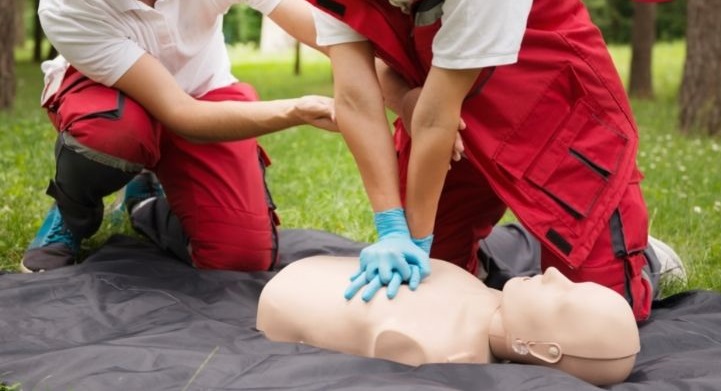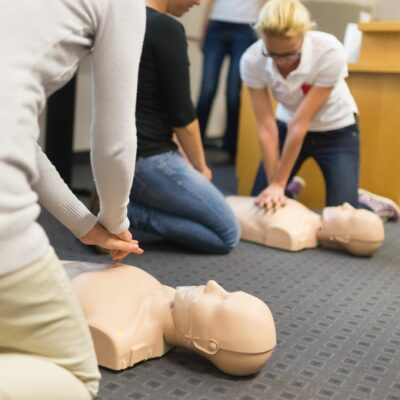Introduction
In a globe where emergency situations can strike anytime, having the skills and expertise to react efficiently is not just an advantage; it's often a requirement. Coming to be licensed in emergency treatment can change anyone from an amateur right into a hero. This post discovers the profound impact that getting an emergency treatment certification can carry individuals and communities alike. Whether you are considering registering in a first help course, seeking to boost your profession, or simply wanting to be better planned for unforeseen circumstances, this comprehensive guide will provide beneficial insights right into the life-changing advantages of emergency treatment training.
What is a First Aid Course?
A first aid course is made to furnish individuals with the necessary abilities required to evaluate and take care of clinical emergency situations up until expert help gets here. These programs cover Hobart First Aid Course different subjects, consisting of injury care, CPR (Cardiopulmonary Resuscitation), choking alleviation, and more.
Importance of Emergency treatment Training
Why is initial help training so important? Right here are some engaging reasons:

- Immediate Response: In emergencies, every 2nd counts. Recognizing how to provide first aid can conserve lives. Confidence Building: Learning gives people with the self-confidence to act when confronted with potentially deadly situations. Community Safety: Educated individuals contribute to total neighborhood security by being gotten ready for emergencies.
Different Kinds of First Aid Courses
Various kinds of first help courses satisfy different target markets and demands:

The Journey from Beginner to Hero
Understanding Your Duty as a Very First Responder
When you take a first help and mouth-to-mouth resuscitation course, you enter the duty of a first -responder. This responsibility is substantial since it suggests you may be one of the initial people on the scene during an emergency.
What Does It Mean to Be an Initial Responder?
Being a very first -responder involves:
- Assessing the scenario quickly Making educated decisions Providing preliminary treatment until specialist help arrives
From Theory to Technique: The Learning Process
The transition from discovering concept to putting it right into practice can be daunting yet exceptionally gratifying. Most programs entail hands-on training sessions where participants technique methods on mannequins or through simulations.
Hands-On Experience: A Video Game Changer
Hands-on experience enables students to:
- Build muscle mass memory Gain self-confidence in their abilities Understand exactly how to respond under pressure
The Life-Saving Abilities Acquired With Training
CPR Methods: More Than Just Breast Compressions
One of the most crucial parts taught in any kind of CPR course is exactly how to do cardiopulmonary resuscitation efficiently.
CPR Tips Overview
Call for assistance (911 or local emergency situation number). Check responsiveness. Begin chest compressions at a rate of 100-120 per minute. Provide rescue breaths if trained.Wound Management and Bandaging Skills
Knowing exactly how to deal with wounds properly can avoid infections and further complications.
Simple Methods for Wound Care
- Clean the injury using light soap and water. Apply disinfectant ointment. Cover with sterilized gauze or bandage.
Real-Life Influence of Having a First Aid Certificate
Stories That Inspire Change
Countless stories highlight how having a first aid certificate has actually altered lives dramatically.
Case Research 1: A Heroic Rescue at Home
Imagine being at home when your child unexpectedly chokes on food. Thanks to her training in a first aid course, she promptly did back blows, removing the food and conserving her youngster's life.
Case Research study 2: Work Environment Emergency
In one more situation, a white-collar worker falls down as a result of heart attack during lunch hour. A colleague trained in mouth-to-mouth resuscitation quickly interferes, performing chest compressions that inevitably result in effective resuscitation prior to paramedics arrive.
Enhancing Profession Opportunities Via Certification
How Companies Value Emergency treatment Training
In today's task market, many companies look favorably upon candidates who have accreditations in emergency treatment and CPR.
Benefits for Professionals
Having a legitimate emergency treatment certification can use various benefits:
- Increased employability Additional capability for occupation advancement Ability to contribute favorably within teams
First Aid Training in Specific Professions
Certain careers call for or strongly take advantage of having educated workers aboard:
Healthcare Providers Teachers Lifeguards CoachesChoosing the Right Course for You
Factors Affecting Your Decision
When exploring alternatives for your first aid course, think about these aspects:
Course Duration Certification Credibility Provider Reputation Content CoveredComparing Various Organizations Offering First Aid Courses
It's vital to research numerous organizations before committing:
|Company|Training course Type|Period|Certification Validity|| --------------|-------------|----------|-----------------------|| Red Cross|Fundamental|8 hours|2 years|| American Heart Association|Advanced|16 hours|2 years|| Resident Recreation Center|Basic|4 hours|No expiration|
FAQ Section
Q1: What is consisted of in a typical emergency treatment course?
A standard first aid course generally consists of subjects such as wound care, shock management, CPR techniques, choking alleviation techniques, and injury assessment.
Q2: For how long does it require to complete an emergency treatment course?
Most fundamental training courses vary from 4 hours as much as 2 days relying on whether it's an initial degree or sophisticated training session.
Q3: Is certification essential after completing the course?
While accreditation isn't constantly necessary, having it enhances your reliability as a person certified in emergency reaction situations.

Q4: Are online first aid programs effective?
Online training courses can offer adaptability however needs to preferably include useful evaluations either practically or via arranged workshops with licensed instructors.
Q5: Can I educate others when I have my certification?
Only if you go after added credentials such as instructor-level training; otherwise, you're outfitted only for personal use unless specified or else by your certifying organization.
Q6: How commonly should I restore my certification?
Typically every two years; however, certain companies could call for different renewal timelines based upon upgraded guidelines or methods discovered throughout re-certification courses.
Conclusion
Embarking on the trip from novice to hero via obtaining a first help certificate isn't simply about learning abilities; it has to do with empowering oneself and others within communities everywhere! The knowledge obtained with an interesting first help and CPR course boosts individual self-confidence while allowing skilled action during situations-- potentially conserving lives along the road! So whether you're encouraged by individual development or specialist enhancement-- investing time into understanding these techniques could truly transform lives forever!
Remember-- the following time an emergency situation emerges around you-- your training could just transform you into someone else's hero!